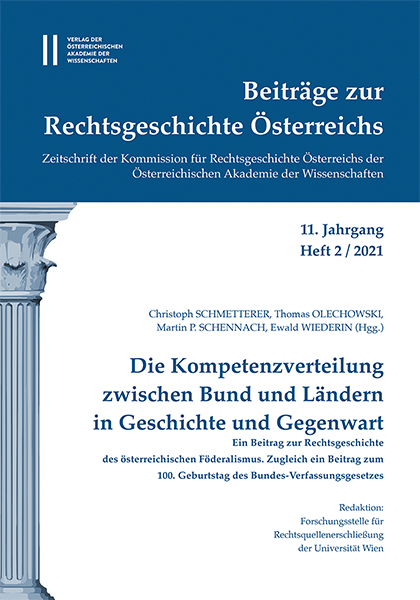
Beiträge zur Rechtsgeschichte Österreichs 11. Jahrgang Heft 2/2021, pp. 195-211, 2021/12/16
Die Kompetenzverteilung zwischen Bund und Ländern in Geschichte und Gegenwart
Ein Beitrag zur Rechtsgeschichte des österreichischen Föderalismus. Zugleich ein Beitrag zum 100. Geburtstag
des Bundes‐Verfassungsgesetzes
The author examines the basic structure of the federal system which resulted from the constitutional legislation in the Austrian Empire after the fall of neo‐absolutism in 1859/60. How were the competences distributed between the Austrian state and its Länder? The foundations of this federal system, which admittedly had little in common with a modern federal state, were laid by the so‐called ‘Oktoberdiplom’ of 1860 and the ‘Februarpatent’ of 1861; the latter is generally known as the first enduring step towards constitutionalism in the Austrian Empire. In the opinion of the contemporaries of the 19th century, the Februarpatent was seen as shaped by radical centralism, whereas the Oktoberdiplom seemed to be characterised by federalist principles. The article mainly deals with the question of how the assessment of both statutes in the contemporary public opinion can be explained.
Keywords: centralism – distribution of competences – Februarpatent – federalism – Oktoberdiplom